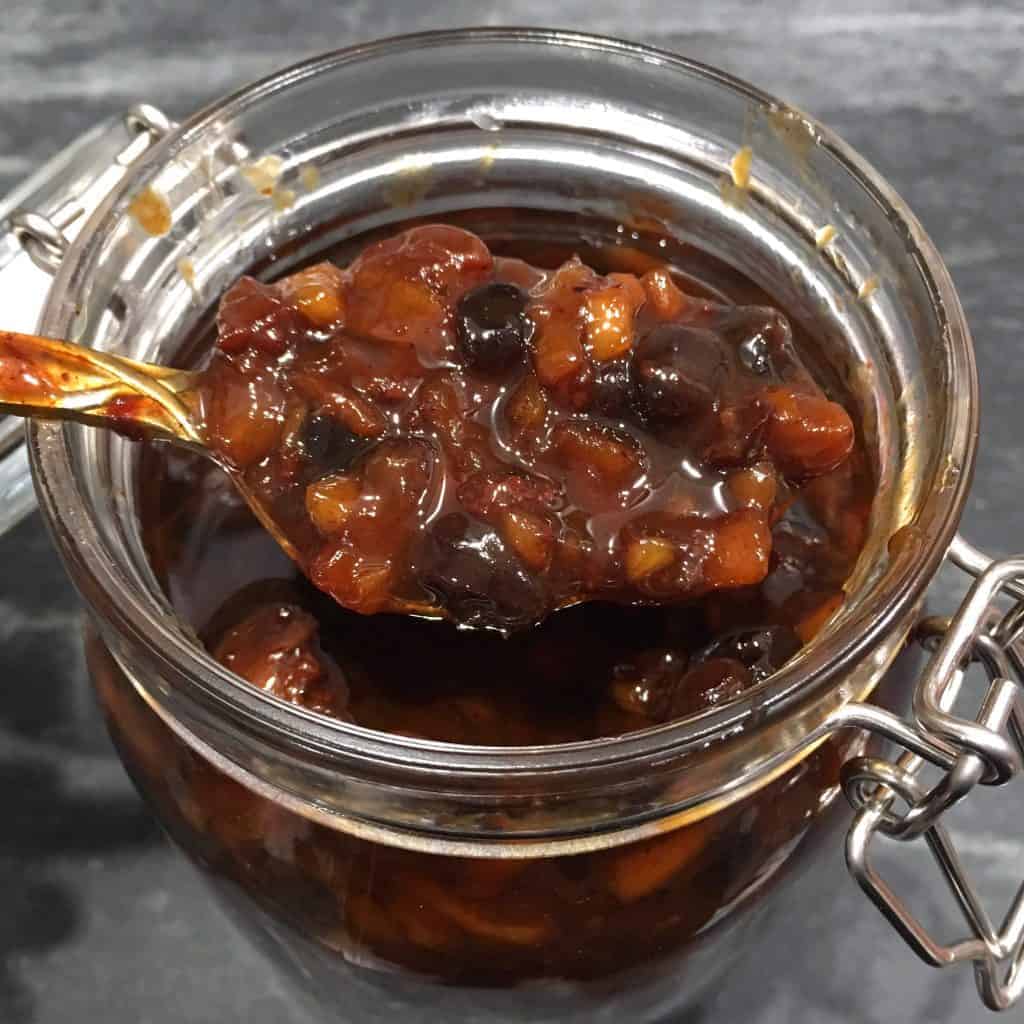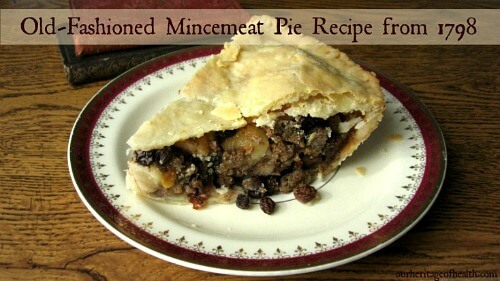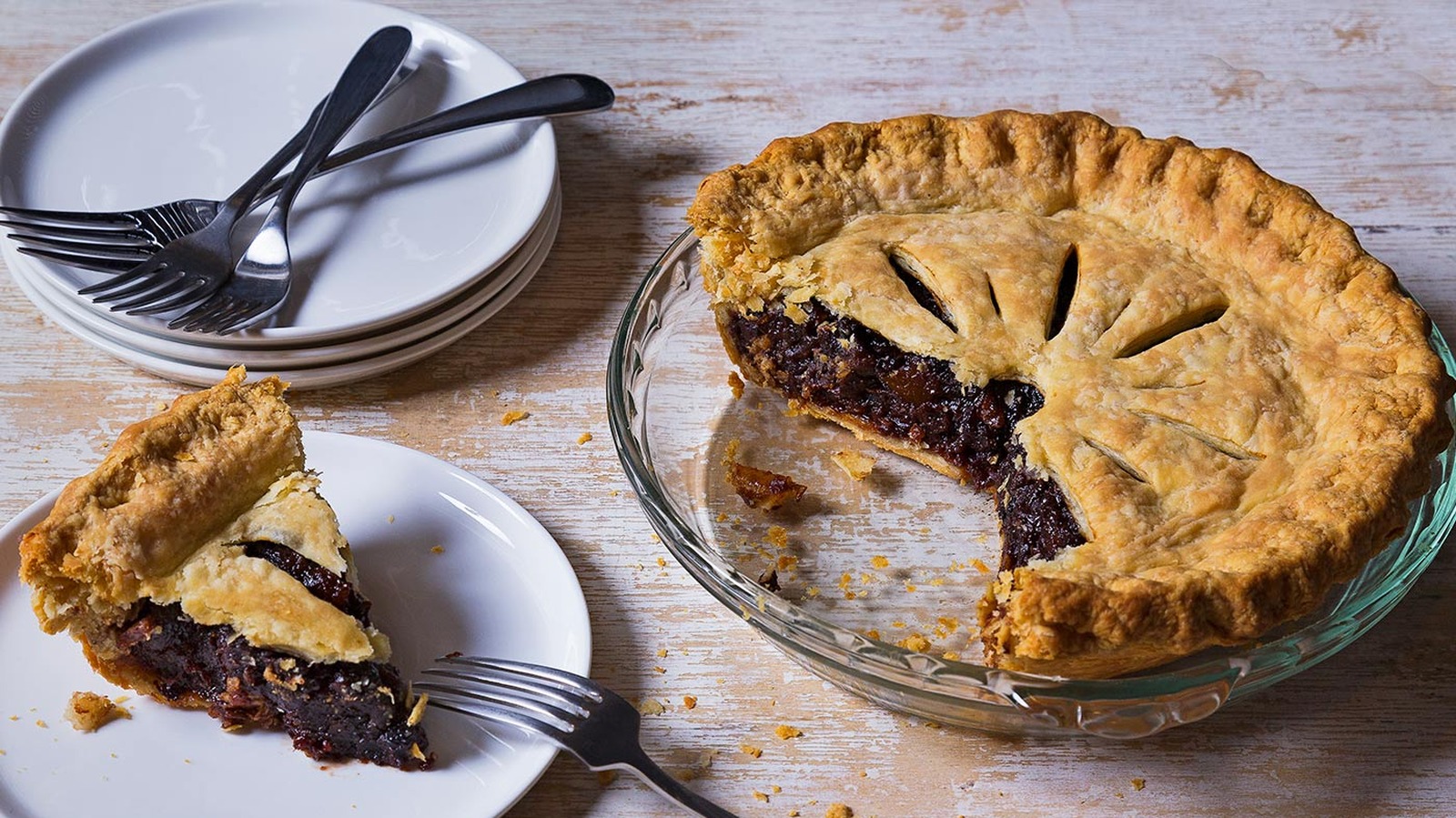Mince pie
mincemeat pie, fruit mince pie
A mince pie is a sweet pie of English origin filled with mincemeat, being a mixture of fruit, spices and suet.[a] The pies are traditionally served during the Christmas season in much of the English-speaking world. Its ingredients are traceable to the 13th century, when returning European crusaders brought with them Middle Eastern recipes containing meats, fruits, and spices; these contained the Christian symbolism of representing the gifts delivered to Jesus by the Biblical Magi. Mince pies, at Christmas time, were traditionally shaped in an oblong shape, to resemble a manger and were often topped with a depiction of the Christ Child. The early mince pie was known by several names, including "mutton pie", "shrid pie" and "Christmas pie". Typically, its ingredients were a mixture of minced meat, suet, a range of fruits, and spices, such as cinnamon, cloves, and nutmeg. Served around Christmas, the savoury Christmas pie (as it became known) was associated with supposed Catholic "idolatry", and during the English Civil War was frowned on by the Puritan authorities. Nevertheless, the tradition of eating Christmas pie in December continued through to the Victorian era, although by then its recipe had become sweeter and its size markedly reduced from its once large oblong shape. Today, the mince pie, usually made without meat (but often including suet or other animal fat), remains a popular seasonal treat enjoyed by many across the United Kingdom and Ireland. The ingredients for the modern mince pie can be traced to the return of European crusaders from the Holy Land. Middle Eastern methods of cooking, which sometimes combined meats, fruits and spices, were popular at the time. Pies were created from such mixtures of sweet and savoury foods; in Tudor England, shrid pies (as they were known then) were formed from shredded meat, suet and dried fruit. The addition of spices such as cinnamon, cloves and nutmeg was, according to the English antiquary John Timbs, "in token of the offerings of the Eastern Magi." Several authors, including Timbs, viewed the pie as being derived from an old Roman custom practised during Saturnalia, where Roman fathers in the Vatican were presented with sweetmeats. Early pies were much larger than those consumed today, and oblong shaped; the jurist John Selden presumed that "the coffin of our Christmas-Pies, in shape long, is in Imitation of the Cratch [Jesus's crib]", although writer T. F. Thistleton-Dyer thought Selden's explanation unlikely, as "in old English cookery books the crust of a pie is generally called 'the coffin'."
Source: Wikipedia
:max_bytes(150000):strip_icc()/easy-traditional-mince-pie-recipe-435108-hero-01-5c01664646e0fb0001c380c6.jpg)


:max_bytes(150000):strip_icc()/775920_original-2000-d020dfe05e464a24a56b552ea45be80a.jpg)




